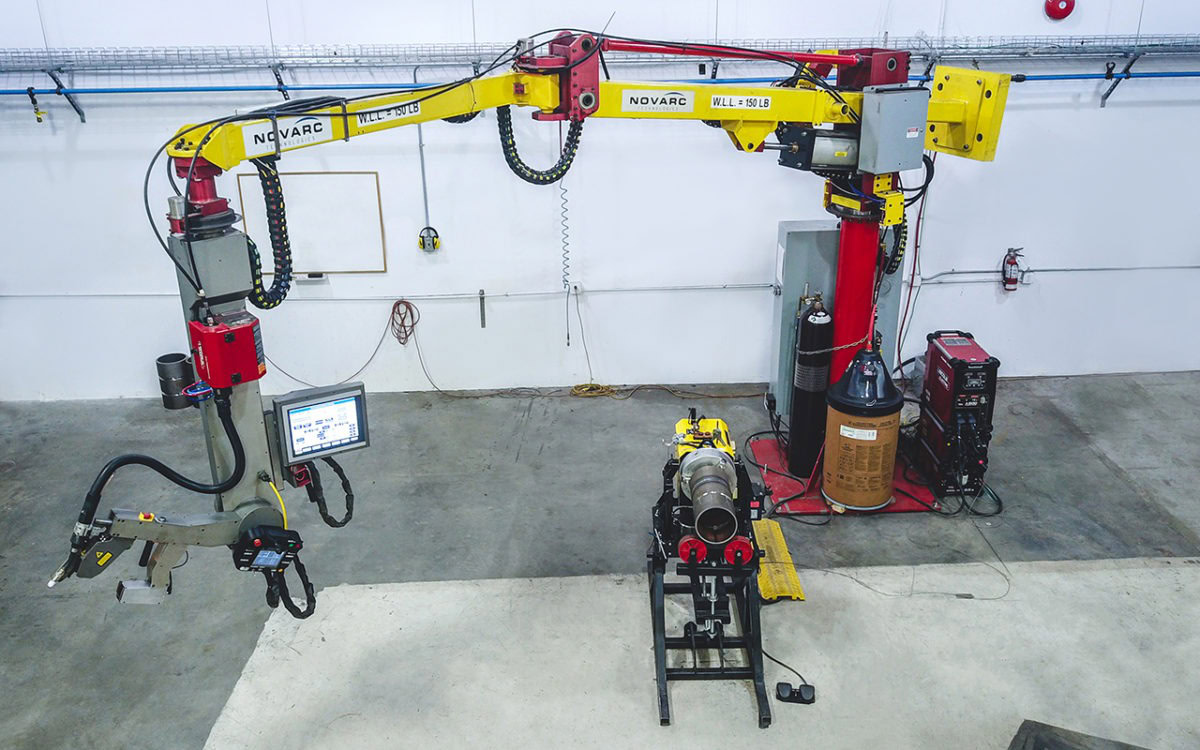Submerged Arc Welding (SAW) is a common arc welding process that is typically operated in the automatic or mechanized mode. Also known as Sub-Arc, this process uses a bed of powdered flux on top of the area being welded to prevent contamination from the atmosphere, and is normally used on pipes and pressure vessels with thicker walls (more than ½” in thickness). Sub-Arc welding systems are typically installed on X-Y Manipulators and are only used for fill and cap passes.
The Spool Welding Robot (SWR) uses modified short circuit waveforms such as RMD, LSC and STT for root pass, and the GMAW-P weld process for fill and cap passes. GMAW is a welding process that uses inert gas rather than flux to cover the area being welded. This welding process uses shielding gas such as CO2 / Argon blends to protect the process from contaminants in the air and to keep atmospheric nitrogen /oxygen away from the molten metals.
SWR versus Sub-Arc manipulators
Since the SWR uses the GMAW from root to cap, it is much more efficient on pipes or vessels less than 0.75 inch compared to Sub-arc manipulators. This is due to the fact that with Sub-arc systems the root pass is typically done manually at a different welding station and then the pipe or spool has to be moved to the sub-Arc welding station for fill and cap passes. Typically a hot pass is required over root prior to SAW pass. In addition, the SWR does not require a flux handling system, nor a post-weld slag removal, and it is able to consistently create high quality welds with eliminating the possibility of slag entrapment defects.
SWR and Sub-Arc manipulators
One of the disadvantages of Sub-Arc systems is that they cannot be used on root pass; thus, the root pass needs to be done manually by a welder. Often the thickness of the STT / RMD root is as such where a hot pass is not required prior to SAW pass. This makes the Spool Welding Robot a perfect solution for shops that already use a Sub-Arc system, as they will be able to do the root pass with the SWR, and then use the Sub-Arc manipulator for fill and cap passes. Using the SWR jointly with the Sub-Arc systems allows pipe and pressure vessel fabrication shops to reduce their labour costs by eliminating the need for manually welding the root pass and the associated material handling time.
Summary
In summary, whether you have a Sub-Arc system or not you can use the SWR to make your welding process much more efficient, and gain a competitive advantage by taking on a broader range of work with the increased production capacity. If you are interested in investing in automated pipe welding, upgrading to the SWR could not be any easier. It only takes 3-5 days to train an operator for both operations and maintenance, and the only requirement is that the operators should know the basics of welding and have some welding experience.
Want to know more about maximizing your pipe spool or pressure vessel productivity? Contact us now!
